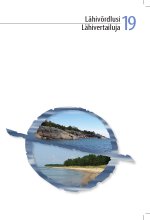Adjektiivide tajumine ja õpetamine
Understanding and teaching adjectives
Author(s): Heinike HeinsooSubject(s): Language and Literature Studies
Published by: Eesti Rakenduslingvistika Ühing (ERÜ)
Keywords: synonymy; collocation; foreign language learning; Finnish
Summary/Abstract: Adjectives make our language richer and often they are necessary in order to express our views. For instance, when discussing the weather, we cannot say: *there is a weather outside, *ulkona on sää/ilma. The given noun needs an adjective as an obligatory component: there is cold, warm, good weather outside, Finnish ulkona on kylmä, lämmin, hyvä sää. The Finnish word ilma has two meanings: ‘weather’ and ‘air’, while with the adjective hyvä the associated meaning for Finns is above all ‘weather’. The article analyses how the Estonians use adjectives in the Finnish language and what kind of problems the synonyms and collocative word-pairs cause. The second half of the article analyses tests of the use of adjectives carried out with students (A2.2–B1.1). The tests deal with how to find an adjective for a base word and also how to find a fitting base word for and adjective. Special attention will be given for the problems arising when using a dictionary and the realisation of how to resolve those. Because of the lack of a complete synonymic and because of the dificulty of comprehending the different hidden meanings, the usage of words will face great problems. The first meaning of words is mostly similar, but the secondary use can be quite different in Estonian and Finnish languages. It is recommended that the word-pairs are learnt collocatively.
Journal: Lähivőrdlusi. Lähivertailuja
- Issue Year: 2010
- Issue No: 19
- Page Range: 120-135
- Page Count: 16
- Language: Estonian

